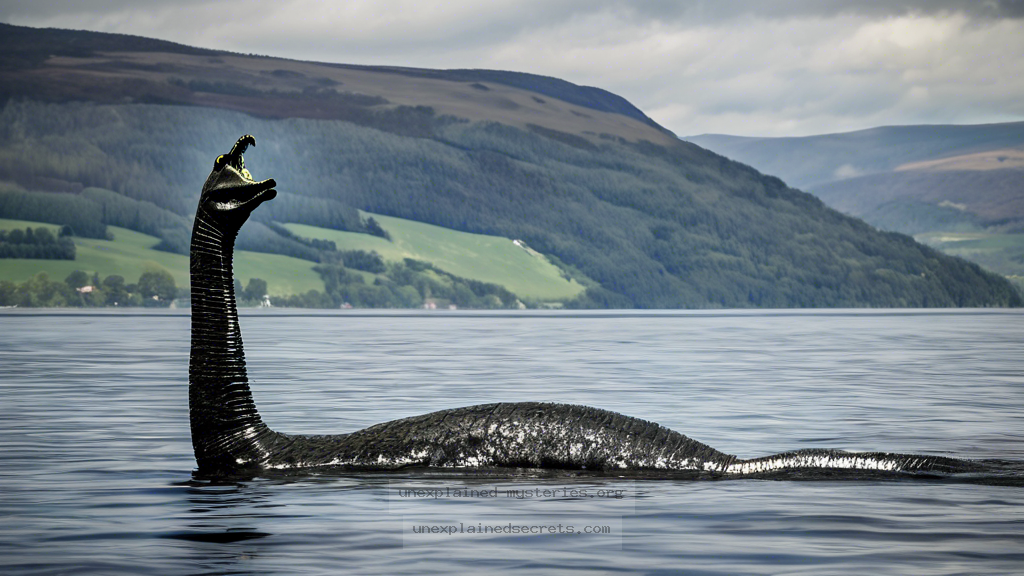What Are the Most Compelling Sonar Detections of the Loch Ness Monster?
What Are the Most Compelling Sonar Detections of the Loch Ness Monster?
The Loch Ness Monster, often affectionately referred to as “Nessie,” has captivated the imaginations of countless individuals since sightings began in the early 20th century. Among the myriad of theories and anecdotal evidence, one of the most intriguing aspects of Loch Ness research revolves around sonar detections. These technological endeavors have produced some compelling and controversial findings over the years. But what do these detections really reveal? Are they potential evidence of a prehistoric creature lurking in the depths, or are they simply misinterpretations of natural phenomena? In this expert-level Q&A, we will explore the most compelling sonar detections related to the Loch Ness Monster, examining the historical context, scientific implications, and ongoing debates surrounding these enigmatic signals.
Historical Context of Sonar Research in Loch Ness
Sonar technology has evolved significantly since the 20th century, and Loch Ness has seen its fair share of sonar explorations. The first serious sonar investigation occurred in 1954 when the Loch Ness Investigation Bureau employed a sonar device to search for Nessie. However, it wasn’t until the 1970s that sonar technology became more sophisticated, allowing researchers to map the loch’s depths more accurately and detect potential anomalies.
In 1972, a significant sonar survey conducted by a team from the University of Edinburgh led by the renowned scientist Sir Peter Scott reported unusual sonar contacts at depths of approximately 200 feet. These detections were intriguing, as they suggested large, moving objects beneath the surface. The sonar readings were not definitive evidence of Nessie, but they ignited further interest and investigation into the loch’s unexplored depths.
Core Concepts of Sonar Technology
Sonar, or Sound Navigation and Ranging, utilizes sound waves to detect objects underwater. By emitting sound pulses and listening for their echoes, researchers can create images or profiles of the underwater environment. This technology can identify the size, shape, and movement of objects, making it a valuable tool in the search for marine life.
Modern sonar systems, such as side-scan sonar, are capable of producing high-resolution images of the underwater landscape, allowing researchers to identify structures, animals, and other objects. These systems can even differentiate between various types of underwater formations, which can help in distinguishing biological entities from rocks or underwater debris.
Notable Sonar Detections of the Loch Ness Monster
One of the most notable sonar detections occurred in 1987 during Operation Deepscan, a massive survey involving several boats equipped with advanced sonar technology. This operation covered a significant portion of Loch Ness and produced one of the most compelling sonar images to date. The sonar readings revealed a large, unidentified object at a depth of about 200 feet, sparking debates about its identity.
Another significant detection came in 2003 when a team of researchers utilized a multi-beam sonar system to map the loch’s floor. They reported encountering a mysterious object that moved with a speed and agility that was inconsistent with the known aquatic life in the area. While skeptics argued that the sonar readings could have been attributed to schools of fish or underwater currents, proponents of the Loch Ness Monster theory saw this as potential evidence of the elusive creature.
Scientific Implications of Sonar Findings
The implications of sonar findings in Loch Ness are multifaceted. On one hand, these detections provide a glimpse into the unexplored depths of the loch, suggesting that there may be undiscovered species or geological formations. On the other hand, the inconclusive nature of sonar data raises questions about the reliability of the findings.
Researchers must consider factors such as water temperature, sediment composition, and biological activity that can influence sonar readings. This complexity means that while sonar can hint at the presence of large objects, it cannot definitively prove the existence of the Loch Ness Monster. The scientific community remains divided on the interpretation of these readings, leading to ongoing debates about the credibility of sonar technology in cryptozoology.
Alternative Perspectives: Skeptics vs. Believers
The Loch Ness Monster has its fair share of skeptics and believers, each interpreting sonar detections through different lenses. Skeptics often argue that sonar readings can be easily misinterpreted due to environmental factors. They point to instances where sonar anomalies have been attributed to natural phenomena, such as underwater springs or schools of fish. For example, in 2016, a sonar detection was later explained as a large group of fish moving together, demonstrating how easily sonar data can be misconstrued.
Conversely, believers in the Loch Ness Monster argue that the sheer volume of sonar detections over the decades cannot be dismissed as mere coincidence. They claim that sonar technology has captured evidence of a creature that has evaded capture for centuries. This perspective often emphasizes the mysterious nature of Loch Ness, which contains deep areas that remain unexplored, suggesting that Nessie could indeed be hiding in the depths.
Common Misconceptions About Sonar Detections
There are several misconceptions surrounding sonar detections in Loch Ness that can cloud public understanding. One common belief is that sonar can provide definitive proof of the Loch Ness Monster. In reality, while sonar can detect large objects, it cannot identify them in a way that confirms their nature. This limitation often leads to sensationalized claims about the existence of Nessie based on sonar data.
Another misconception is that sonar technology is infallible. Environmental factors such as temperature gradients and the presence of debris can distort readings, leading to false positives. Additionally, the interpretation of sonar data requires expertise and should be approached with caution. Misinterpretations can easily occur, leading to misleading conclusions about what lies beneath the surface of Loch Ness.
Best Practices for Investigating Sonar Data
For those interested in investigating sonar data related to Loch Ness or other cryptozoological phenomena, several best practices can enhance the quality of research. First and foremost, it is crucial to use advanced sonar technology that provides high-resolution data. Multi-beam and side-scan sonar systems can yield more accurate representations of underwater environments.
Collaboration with marine biologists and sonar experts is also essential. Their expertise can provide valuable insights into interpreting sonar data accurately and understanding the ecological context of any detected objects. Furthermore, employing multiple methods of investigation, including visual surveys and underwater cameras, can help corroborate findings and reduce the chances of misinterpretation.
Future Developments in Loch Ness Research
The future of Loch Ness research looks promising, especially with advancements in technology. The rise of autonomous underwater vehicles (AUVs) equipped with sonar and imaging systems presents new opportunities for exploration. AUVs can navigate the loch autonomously, covering vast areas and collecting data that traditional methods may miss.
Additionally, the integration of artificial intelligence (AI) in analyzing sonar data could revolutionize how researchers interpret findings. AI algorithms can process large datasets quickly, identifying patterns that might be invisible to the human eye. These developments could lead to a more comprehensive understanding of Loch Ness’s underwater ecosystem and potentially uncover new evidence related to Nessie.
Conclusion: What Lies Beneath Loch Ness?
Sonar detections in Loch Ness remain one of the most compelling aspects of the ongoing quest to uncover the truth about the Loch Ness Monster. While these findings have sparked intrigue and debate, they also highlight the complexities of interpreting underwater signals. The history of sonar research in Loch Ness reveals a landscape filled with both scientific inquiry and speculative belief.
As technology continues to evolve, future sonar studies may provide clearer insights into what truly lies beneath the surface of this iconic loch. Whether skeptics or believers, the mystery of Nessie endures, reminding us of the allure of the unknown and the depths yet to be explored. As we look to the future, one question remains central: will we ever uncover the truth about the Loch Ness Monster? Only time and technology will tell.
Other Articles
Recent Posts
- What Happened to Flight MH370? The Conspiracy Theories That Still Haunt Us
- What Secrets Lurk Within the Walls of the Infamous Trans-Allegheny Lunatic Asylum?
- What Evidence Supports the Existence of Bigfoot in the Pacific Northwest?
- What Happened to the Indus Valley Civilization? Unraveling the Mysteries of Ancient Urban Life
- Can Telepathy Be Scientifically Proven Through Laboratory Evidence?







